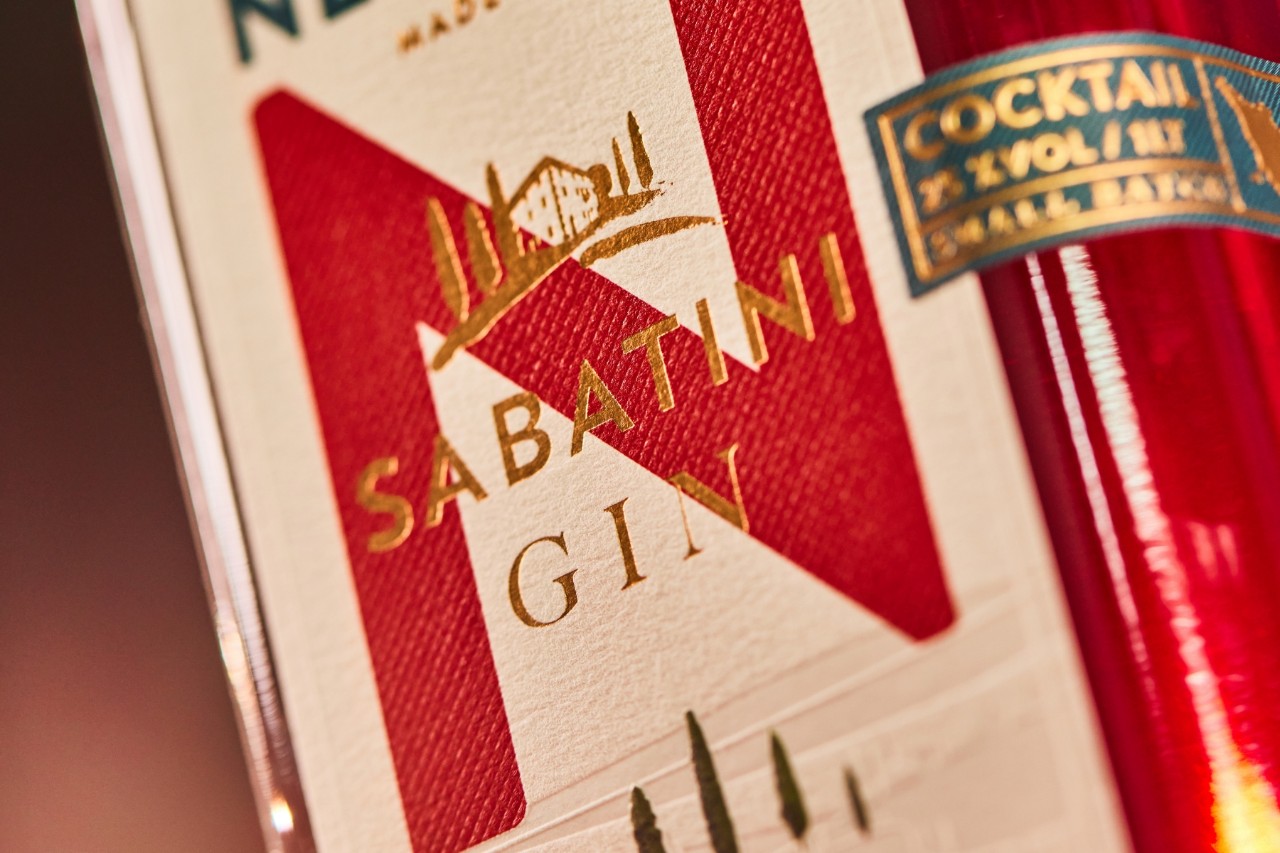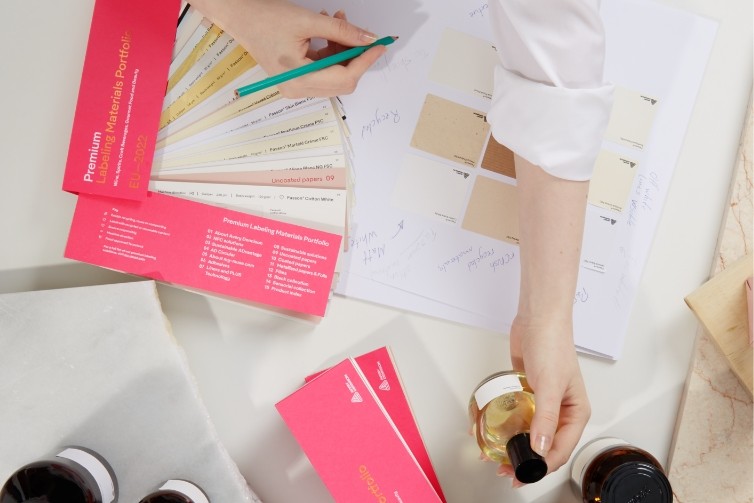Raising a glass to wine sustainability
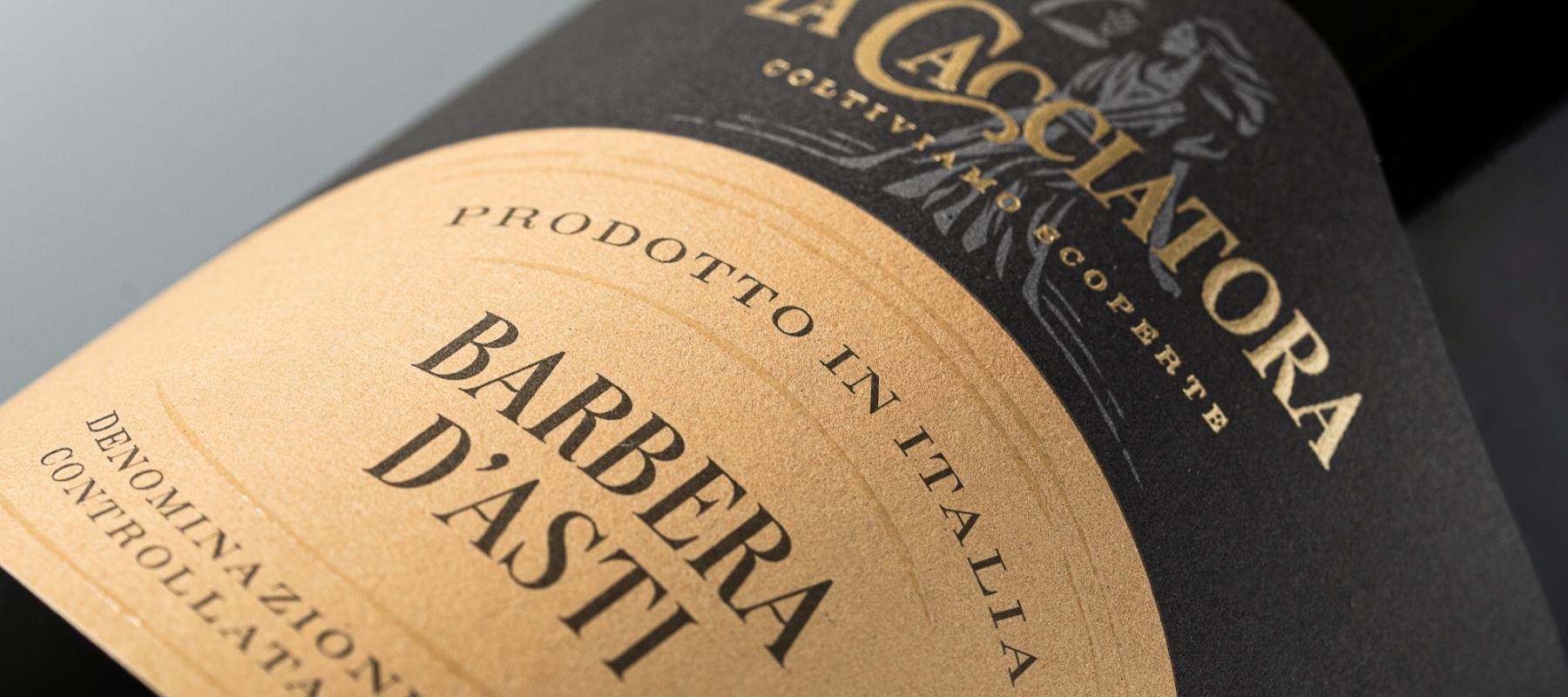
Prosit Group's eco-conscious winemaking journey for La Cacciatora
Brand: La Cacciatora
Design studio: Studiopoletto
Label material: Fasson® rNoble Blanc FSC®
Printer: Rifa
Founded in 2018, Prosit Group lives up to the innovative spirit of Italian winemaking. With its expertise in agriculture, winemaking, marketing, and distribution, this visionary organization is devoted to raising Italian wine's global status. At its core lies a commitment to sustainability, woven deeply into the fabric of its business model. We recently had a conversation with Luca Maruffa, Head of Marketing at Prosit Group, to delve into how the business is building a sustainable future for Italian wineries, one bottle at a time.
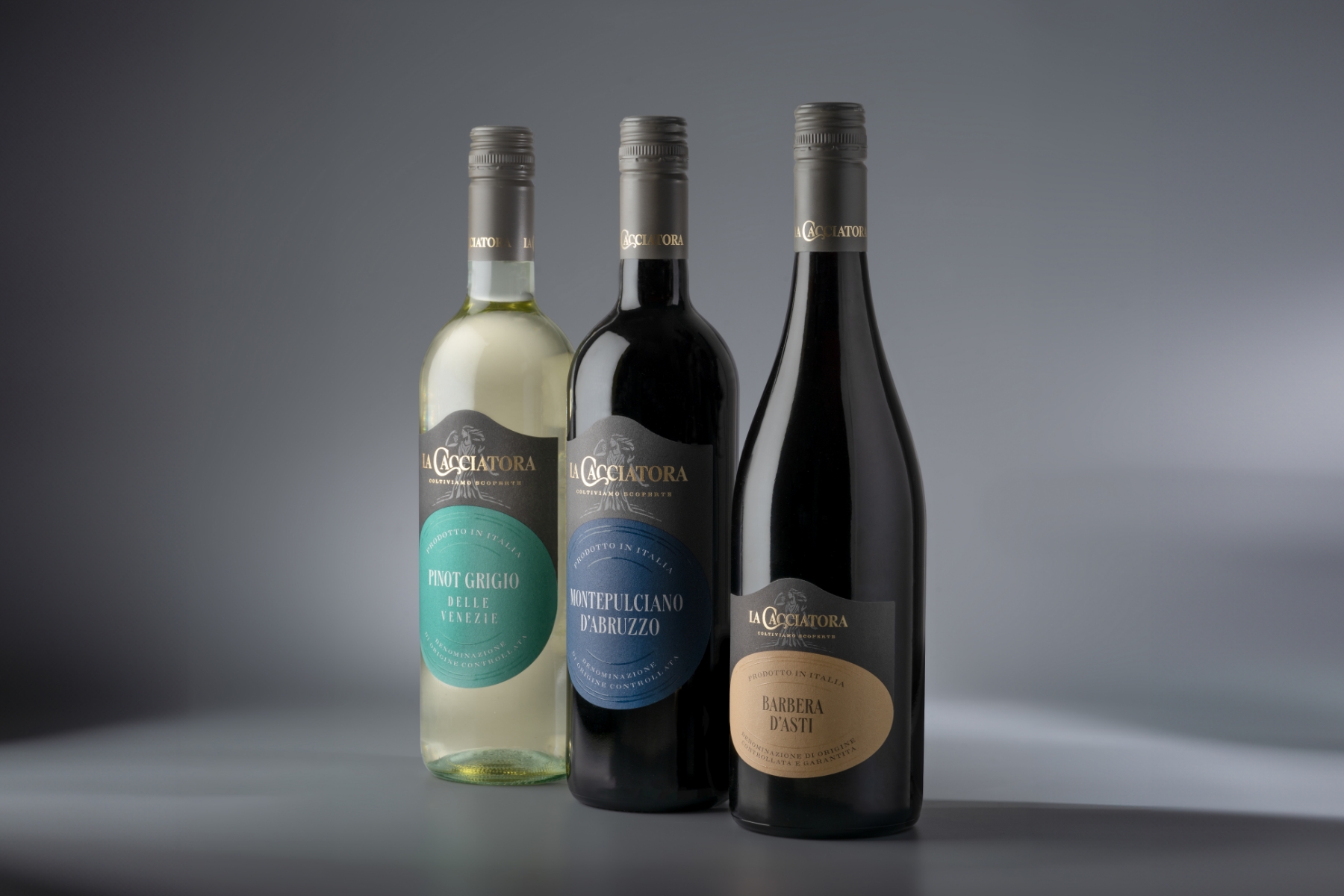
Prosit Group talks openly about having a business model compliant with ESG parameters. Can you tell us more about what you actively do to be an environmentally friendly company?
Luca: Prosit Group was established in 2018, and our approach to sustainability is multifaceted, reflecting the different stages of our various wineries. For instance, our brand, Torrevento, has been a forerunner in environmental policies, even receiving an award for its significant efforts. The brand is also certified for its comprehensive economic, environmental, and social responsibility approach. On the other hand, with our recent acquisition of Casa Vinicola Caldirola, we are actively working to elevate its sustainability practices. A key focus has been on its La Cacciatora range, where we've taken steps in sustainable packaging by adopting recycled paper labels in partnership with you at Avery Dennison and introducing more eco-friendly screw caps.
We're also in the process of improving various production aspects to be more environmentally conscious, aligning with our overall commitment to sustainability. Despite being a young company with a range of wineries, we are steadily working towards a cohesive and sustainable approach across all our operations - but at this moment in time, due to the diversity, they're all at different stages in their sustainability journeys.
How have market trends and consumer demand for sustainable products influenced your strategy, particularly in the context of your wine labels and overall packaging?
Luca: Market trends and consumer demand, particularly among younger demographics aged 20 to 40, are significantly shaping our strategy, especially regarding packaging sustainability. We recognize that packaging is not just a practical aspect of our product but also a tangible representation of our brand values that consumers can see and touch.
La Cacciatora is a historic brand and exemplifies this approach. It now needs rejuvenation to appeal to both our loyal customer base and a new, younger audience. This rebranding is crucial, especially in the Italian off-trade market where our primary sales are concentrated. Understanding that younger consumers do not drink wine as a daily ritual, we are focusing on creating packaging that resonates with their values. This includes using lighter bottles and screw caps for better sustainability compared to traditional solutions and insisting on recycled paper for labels. Our goal is to offer packaging that is minimalistic, modern, and attractive to these new consumers, aligning with their heightened environmental consciousness and preferences. Additionally, in response to evolving consumer preferences and a growing market trend towards health-conscious consumption, we are planning to launch a line of low-alcohol and potentially zero alcohol products in the next few months, broadening our appeal and meeting our customers where their interests lie.
You chose Avery Dennison’s Fasson® rNoble Blanc FSC® for the labels of La Cacciatora wines. What key factors influenced the decision to use this, and how do you believe this choice aligns with your broader sustainability goals?
Luca: Several key factors influenced our decision to use Fasson® rNoble Blanc FSC® for the labels of La Cacciatora. Firstly, the environmental aspect was crucial; we wanted a label that was 100% recycled, as this directly communicates our commitment to sustainability to our consumers. The clarity of having a label that is 100% recycled is a strong statement.
Secondly, the aesthetic and sensory aspects were also important. We wanted natural colors for the labels to reflect our wines' authenticity and traditional aspects. And the tactile sensation of the paper was also a consideration, as we wanted the labels to feel superior and align with the quality of the wine itself.
Lastly, cost-effectiveness played a role in our decision. Sustainable solutions often come at a higher price, which can be challenging for products like La Cacciatora, which are not super premium and are considered 'daily' wines that are sold in high volumes. So, we had to balance the cost of the labels with the need to maintain affordability for our consumers while still investing in the quality of the wine and its presentation.
Overall, choosing Fasson® rNoble Blanc FSC® aligned with our broader sustainability goals, offering an environmentally friendly solution without compromising on quality or consumer appeal.
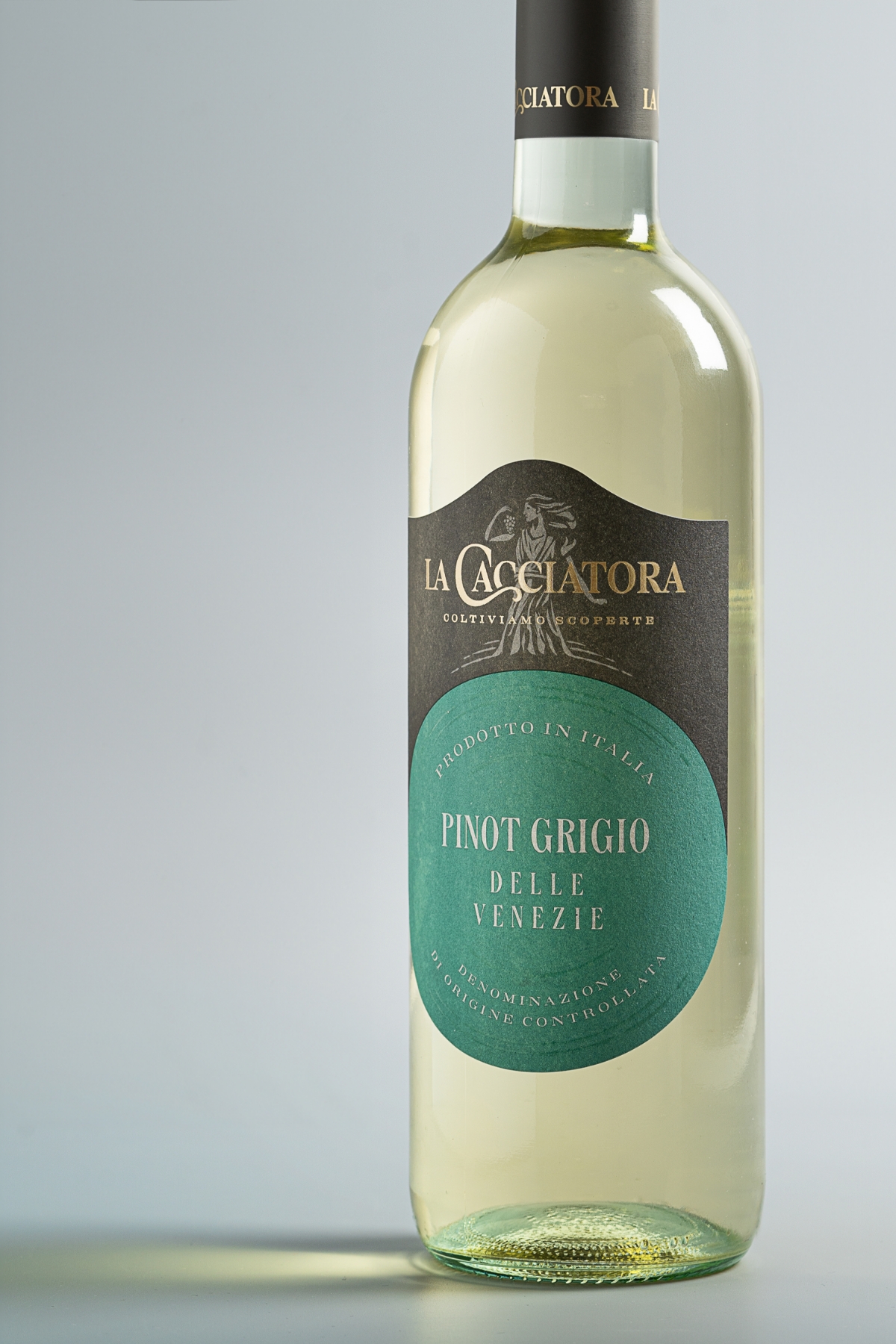
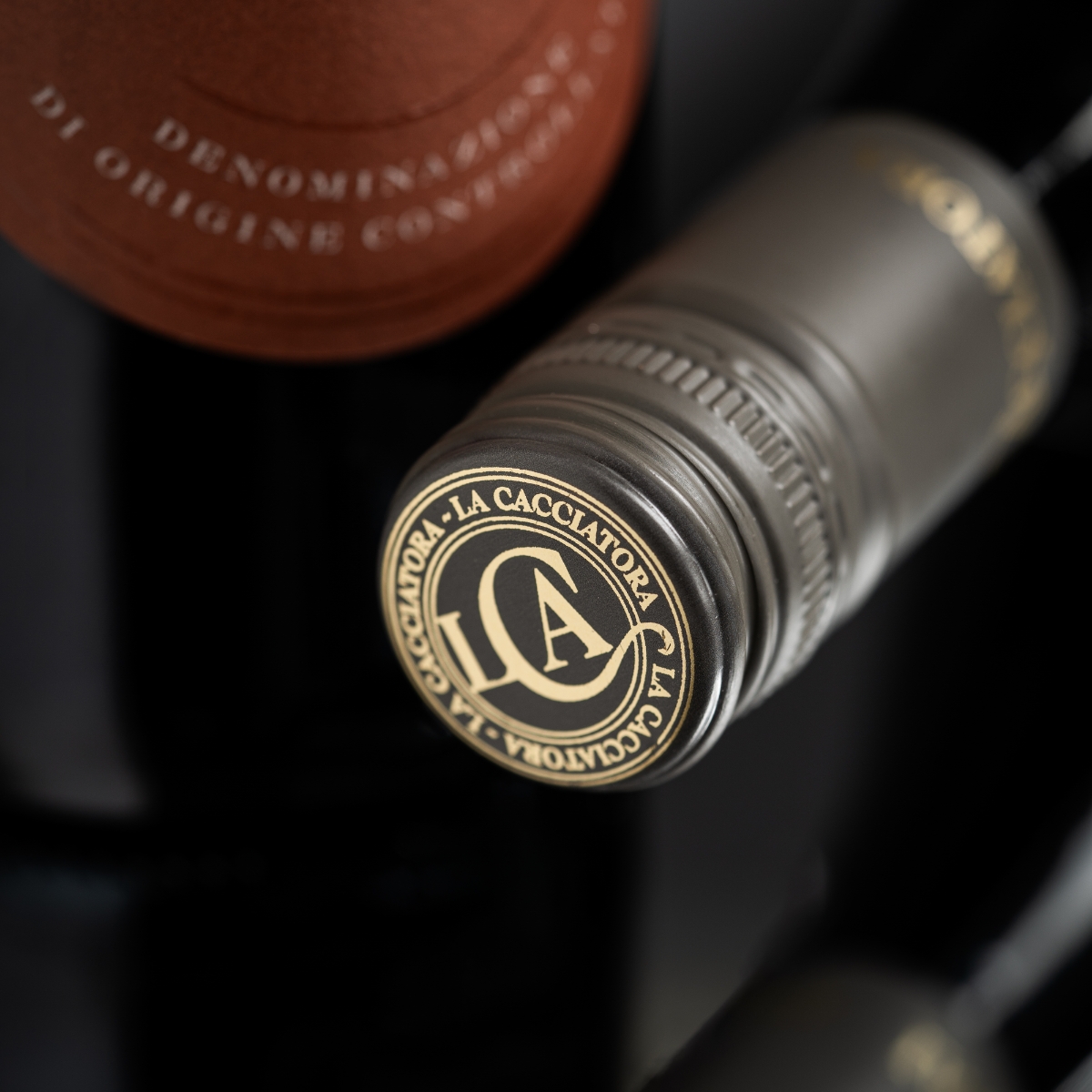
While the sustainable attributes of Fasson® rNoble Blanc FSC® are clear, how do you ensure that this choice of label material also meets the premium aesthetic expectations for La Cacciatora?
Luca: Our aim with La Cacciatora is to elevate it from a daily wine to straddle the line between everyday and popular premium segments. While we are currently focused on the entry-level segment, we have plans to introduce a premium range of La Cacciatora next year. This range will feature fewer varieties and SKUs to reposition the brand subtly. Despite this shift, it's important for La Cacciatora to remain accessible for regular consumption, particularly for our best-selling products.
In terms of aesthetics, we collaborated with Studiopoletto on this project to strike a balance between simplicity and sophistication. Moreover, the label was masterfully printed by Rifa, an Italian printer with advanced technological expertise specializing in premium labeling for wines, spirits and beers. The goal was to offer consumers something extra, even within this segment. We wanted to avoid over-promising but still needed to communicate a sense of quality and care. Our focus was on creating a product presentation that stands out on shelves in Italy through thoughtful graphics and the use of sustainable materials like lighter bottles and recycled paper. It's all about giving consumers a compelling reason to choose La Cacciatora, acknowledging and accepting the changes we're making as the brand evolves.
How has embracing sustainability in your wine labels impacted consumer perception and reception of the La Cacciatora brand?
Luca: April this year will be the first time our wines will be presented with the new packaging, so we have yet to get direct consumer feedback. However, the move towards sustainability, especially the introduction of screw caps in the Italian market, is a bold step for us.
We've presented the rebranding to key agents in the Italian off-trade market and received a positive response. There might be a period of adjustment for consumers due to the traditional nature of La Cacciatora, but the coherence of our choices across all SKUs will strengthen our brand image and values. This consistency in our approach to sustainability, particularly with the screw caps, is something we've been very deliberate about.
Our buyers understand the overall vision of this project and are supportive. They play a crucial role in correctly positioning the brand and aiding in its market rotation. Their enthusiasm and understanding of the project's depth are encouraging signs for us as we navigate this transition towards a more sustainable and modern brand presentation.
What efforts does Prosit Group undertake to educate consumers about the sustainability aspects of your products?
Luca: To educate consumers about the sustainability aspects of our products, we are taking a multi-faceted approach. Firstly, we've informed our sales agents and key buyers across Italy of our comprehensive sustainability project. A major aspect of this communication strategy focuses on the sustainability credentials of our products, especially emphasizing the use of 100% recycled paper for our labels. We aim for clarity in our messaging, believing that straightforward, precise information is more impactful than overly detailed narratives that are common on wine back labels.
Additionally, we're increasing our digital communication. Our website is set to feature dedicated pages on sustainability, offering in-depth insights into our initiatives and commitments in this area. This section will not only cover our sustainable practices but also tie them to our product features, like the screw cap, emphasizing both sustainability and the practical benefits for consumers, like the extended usability of the wine - opening a bottle of wine and consuming it within a short period of time is no longer necessary.
Our social media strategy is also being revamped to include sustainability as one of the primary narrative directions. Through these channels, we aim to engage our audience more actively, sharing insights and updates about our journey towards more sustainable wine production and packaging. This approach is still in progress, but it's a key part of our effort to connect with consumers who are increasingly interested in their purchases' environmental impact.
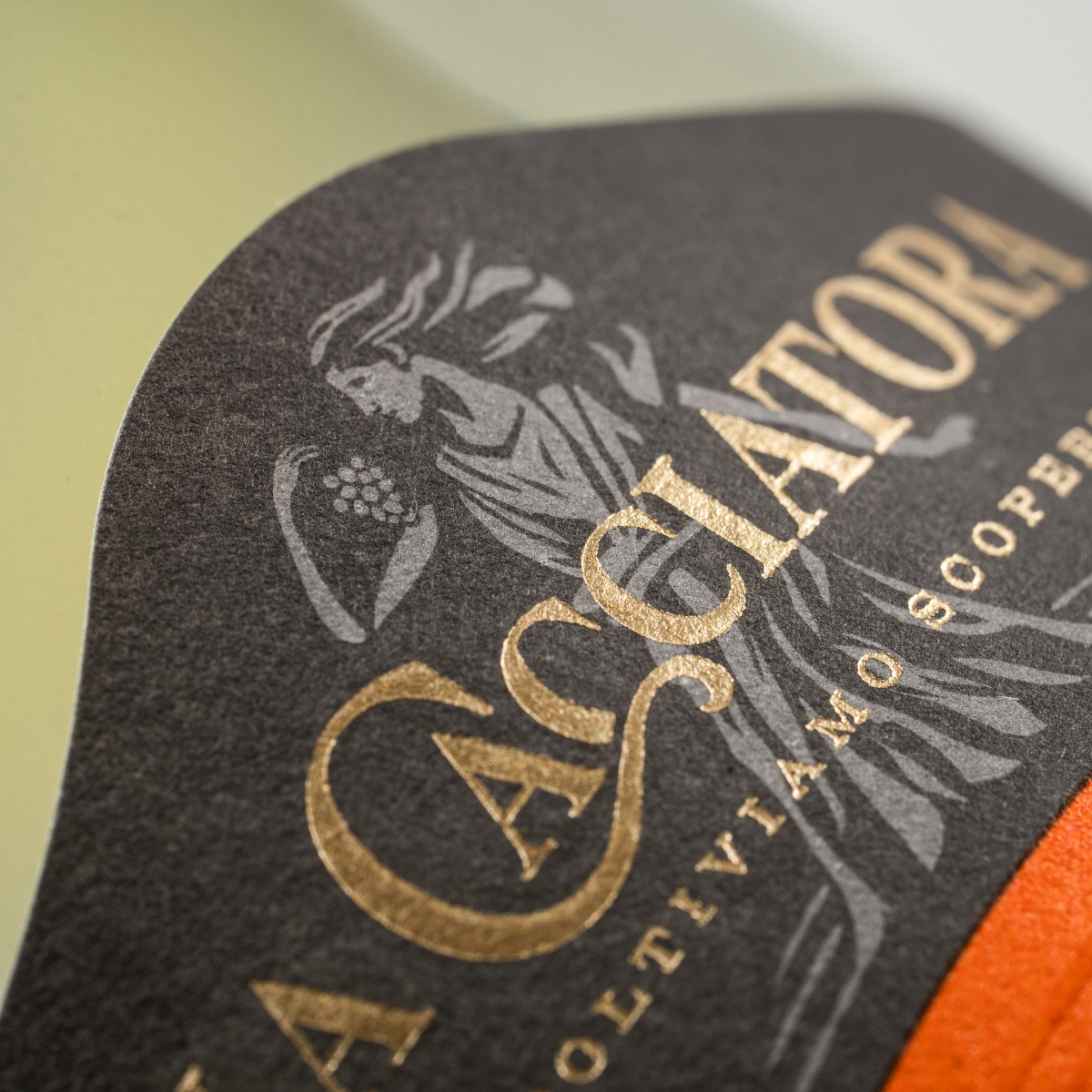
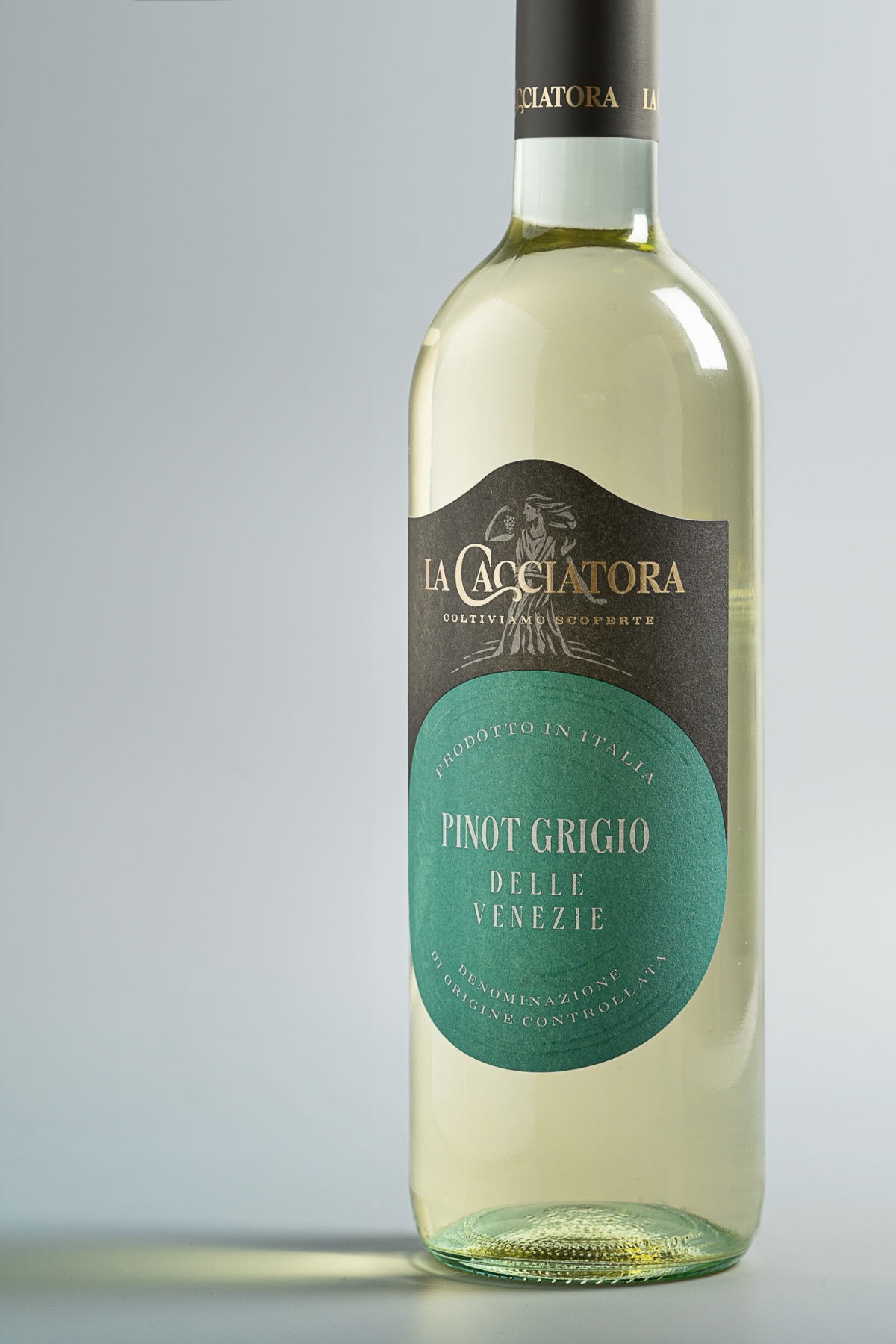
Some brands still shy away from using more sustainable labeling materials because they fear they will have to sacrifice quality and aesthetics - though we know this isn't the case. What message would you send to these companies?
Luca: The wine industry has a diverse range of products, each with unique packaging needs. Reflecting on my experience with other wineries, I've seen a trend of using excessively heavy bottles, particularly for certain wine types like Primitivo. This has led to a consumer association of these wines with heavy bottles.
However, the market is evolving. A few years ago, transitioning to lighter, more contemporary packaging might have seemed risky. But today, many markets are ready to embrace innovative packaging solutions, including lighter bottles and creative designs. This shift isn't just about replacing old packaging with lighter alternatives; it's an opportunity for companies to rethink their packaging strategies creatively.
Wine companies need to adapt and explore these sustainable options, not as a challenge but as an opportunity to engage with consumers and clients. Successful adaptation requires creativity in designing attractive, practical, and exciting packaging, coupled with effective communication strategies.
For companies hesitant about moving towards sustainable packaging due to concerns over quality and aesthetics, I would encourage them to view this as a chance to innovate and connect with their audience. It's about leveraging sustainability as a strength, enhancing the product's appeal while aligning with evolving consumer preferences.

